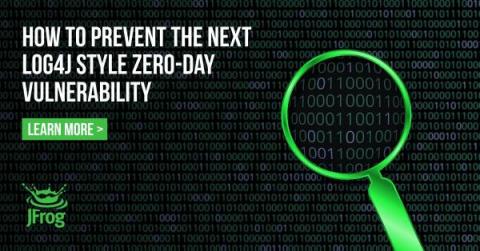Security | Threat Detection | Cyberattacks | DevSecOps | Compliance
Vulnerability
How LiveRamp used Snyk to remediate Log4Shell
Like any company that uses web apps or enterprise software built with Java, San Francisco-based LiveRamp was concerned that it had been infected by the Log4Shell zero-day vulnerability within Log4j — the popular open source logging library.
Mitigating controls for cloud-native applications: Why you need them and how Calico Cloud can help
Fixing vulnerabilities can be hard—especially so for cloud-native applications. Let’s take a deeper look at why this is, and how mitigating controls can help secure your cloud-native applications.
Critical Authentication Bypass Vulnerability in VMware Products - CVE-2022-22972
Critical Unauthenticated RCE Vulnerability in Zyxel Firewalls - CVE-2022-30525
How to Prevent the Next Log4j Style Zero-Day Vulnerability
Software testing is notoriously hard. Search Google for CVEs caused by basic CRLF (newline character) issues and you’ll see thousands of entries. Humanity has been able to put a man on the moon, but it hasn’t yet found a proper way to handle line endings in text files. It’s those subtle corner cases that have a strong tendency of being overlooked by programmers.
Scan your software packages for security vulnerabilities with JFrog Xray
Scanning your packages for security vulnerabilities and license violations should be done as early as possible in your SDLC, and the earlier the better. This concept is also known as “Shifting Left”, which helps your organization comply with security policies and standards early on in the software development process. As developers, this may seem like a hassle, but with JFrog CLI it’s easy!
The State of Ransomware in 2022
Ransomware continues to be a prevalent threat to almost every modern industry after a sudden renaissance at the beginning of the COVID-19 pandemic as threat actors sought to capitalize on overwhelmed organizations and their suddenly vulnerable employees. It poses a particular danger to companies that hold sensitive data and house valuable assets, or those that could impact countless other industries and organizations should their critical operations be taken offline.
Vulnerability Remediation: A Practical Guide
To stay ahead of malicious attacks, developers and security teams must have a way to identify, prioritize, fix, and monitor vulnerabilities, a process known as vulnerability remediation. When it comes to detection, organizations can use a variety of application security testing (AST) tools to identify vulnerabilities in software applications and other systems.
Another day, another DCE/RPC RCE
CVE-2022-26809 was patched in Microsoft’s previous Patch Tuesday (April 12) and it’s a doozy: remote code execution on affected versions of DCE/RPC hosts. The vulnerability attracted a lot of attention in the security community, both because of its severity but also because it appears to be really hard to trigger.











